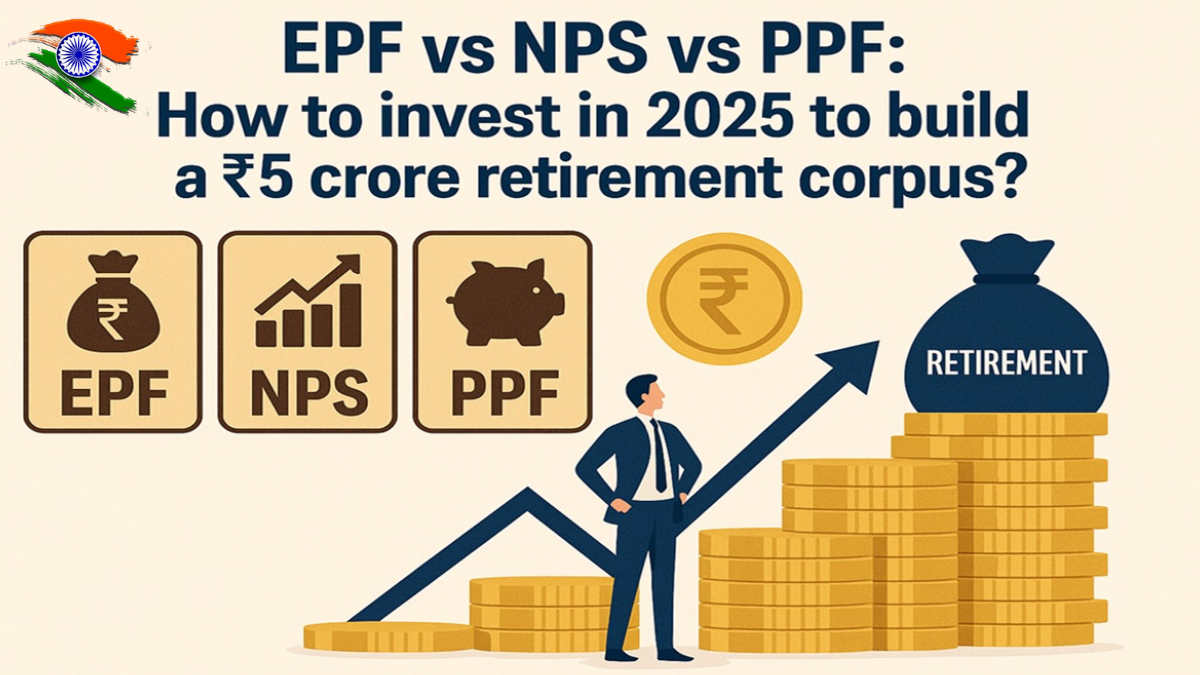Building a retirement fund can feel overwhelming, especially when you’re faced with multiple investment options. Three popular choices dominate the conversation: Systematic Investment Plans (SIPs), the National Pension Scheme (NPS), and Employee Provident Fund (EPF). Each offers distinct advantages, but which one aligns best with your retirement goals?
The answer depends on your risk tolerance, investment timeline, and financial objectives. While EPF provides government-backed security, SIPs offer market-linked growth potential, and NPS combines both worlds with tax benefits. Understanding these differences will help you make an informed decision about your financial future.

Let’s examine each option in detail to help you choose the right retirement strategy.
EPF: The government-guaranteed safety net
Employee Provident Fund serves as a cornerstone of retirement planning for salaried employees in India. This mandatory savings scheme requires both employee and employer to contribute 12% of the basic salary to the EPF account.
Key features of EPF
The current interest rate stands at 8.25% per annum, offering steady, predictable returns. What makes EPF particularly attractive is its tax structure. Contributions, interest earned, and withdrawals all remain tax-free under the EEE (Exempt-Exempt-Exempt) framework.
EPF suits conservative investors who prioritize capital protection over high returns. The government backing provides peace of mind, making it ideal for those approaching retirement or preferring low-risk investments.
EPF limitations to consider
While EPF offers security, it has drawbacks. The returns may not keep pace with inflation over long periods. Additionally, contribution limits are tied to your salary, potentially restricting your ability to build a larger retirement corpus.
SIP: Harnessing market growth potential
Systematic Investment Plans allow you to invest fixed amounts regularly in mutual funds. This approach leverages rupee cost averaging and the power of compounding to build wealth over time.
Advantages of SIP investing
SIPs offer flexibility unmatched by other retirement options. You can start, stop, or modify investments based on changing circumstances. The investment amounts are entirely under your control, allowing you to increase contributions as your income grows.
Market-linked returns through SIPs have historically outperformed fixed-income options like EPF over long periods. This makes SIPs particularly suitable for young investors with longer time horizons who can weather market volatility.
Understanding SIP risks
Market volatility represents the primary risk with SIPs. Returns fluctuate based on market conditions, and there’s no guarantee of positive returns in any given period. Additionally, SIPs don’t offer the same tax benefits as EPF or NPS.
NPS: Balancing growth with tax efficiency
The National Pension Scheme combines market-linked returns with attractive tax benefits. Available to all Indian citizens aged 18-70, NPS offers a structured approach to retirement planning.
NPS benefits overview
Tax advantages make NPS compelling. Investors can claim deductions up to ₹1.5 lakh under Section 80C, plus an additional ₹50,000 under Section 80CCD(1B). This dual benefit significantly reduces your tax burden while building retirement wealth.
NPS allows you to choose your asset allocation based on risk appetite. You can adjust equity exposure from conservative to aggressive approaches, providing flexibility within a structured framework.
NPS considerations and constraints
The major limitation is liquidity. Your investment remains locked until age 60, with limited withdrawal options before maturity. At retirement, you must use 40% of the corpus to purchase an annuity, which may not suit everyone’s retirement plans.

Comparing returns and suitability
Each option serves different investor profiles and financial goals.
Return potential analysis
Historically, equity-oriented SIPs have delivered the highest long-term returns, often exceeding 12-15% annually. However, these returns come with higher volatility.
EPF provides stable 8.25% returns with zero risk, making it suitable for conservative investors. NPS returns fall between EPF and SIPs, typically ranging from 8-12% depending on asset allocation choices.
Risk and liquidity factors
EPF offers complete capital protection with government guarantee. SIPs carry market risk but provide complete liquidity. NPS offers moderate risk with restricted liquidity until retirement.
Your age and risk tolerance should guide your choice. Younger investors can afford higher risk for potentially greater rewards, while those closer to retirement might prefer EPF’s stability.
Making the optimal choice for your retirement
The best retirement strategy often involves a combination rather than choosing just one option.
Strategic allocation approach
Consider a balanced approach: maximize EPF contributions for guaranteed returns, invest in SIPs for growth potential, and use NPS for additional tax benefits and structured savings.
Young professionals might allocate 60% to SIPs, 30% to EPF, and 10% to NPS. As you age, gradually shift toward more conservative options like EPF.
Time horizon considerations
Investment timeline significantly impacts your optimal choice. With 20+ years until retirement, aggressive SIP allocation makes sense. With less than 10 years, EPF’s stability becomes more valuable.
Regular review and rebalancing ensure your retirement strategy remains aligned with changing circumstances and goals.
FAQs: Frequently Asked Questions
1. Which option is best for high-risk investors?
For high-risk investors, SIPs can be a suitable option as they allow investment in equities, which have the potential for higher returns over the long term. However, they also come with greater market volatility.
2. Can I invest in both NPS and EPF?
Yes, you can invest in both NPS and EPF simultaneously. Diversifying between these options can help balance risk and secure a steady retirement corpus.
3. Which offers better tax benefits, SIP, NPS, or EPF?
NPS and EPF both provide significant tax benefits under Section 80C of the Income Tax Act. Additionally, NPS offers an extra deduction of up to ₹50,000 under Section 80CCD(1B). On the other hand, SIPs in ELSS funds can also qualify for deductions under Section 80C.
4. What is the lock-in period for EPF and NPS?
EPF contributions are locked until retirement or until specific conditions are met, such as job changes. NPS, however, allows partial withdrawals under certain conditions but is primarily designed to be accessed post-retirement.
5. How do I choose between NPS and EPF?
Choosing between NPS and EPF depends on your financial goals, risk tolerance, and the level of flexibility you desire. EPF provides a conservative and stable growth option, while NPS offers diverse investment exposure with the possibility of higher returns.
Building your retirement roadmap
Your retirement planning success depends on starting early and staying consistent. Each option EPF, SIP, and NPS offers unique advantages that can contribute to a comprehensive retirement strategy.
Consider your current age, income level, risk tolerance, and retirement goals when making allocation decisions. Remember that retirement planning is not a one-time decision but an ongoing process requiring periodic review and adjustment.
Start with what you’re comfortable with today, then gradually diversify across these options as your income and understanding grow. The key is beginning your retirement journey now, regardless of which option you choose first.
For More Information Click HERE